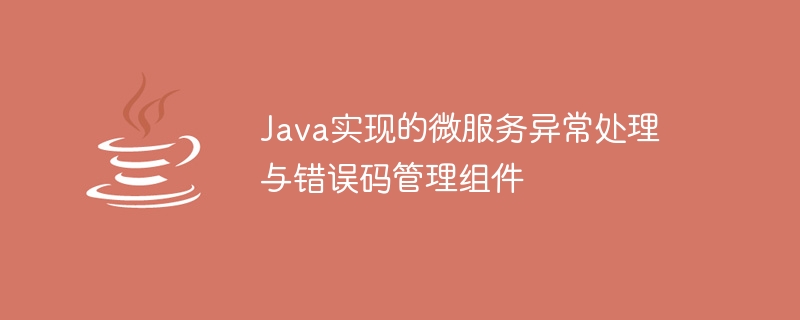

Microservice exception handling and error code management components implemented in Java
Introduction:
With the popularity of microservice architecture, more and more systems are being Split into multiple smaller services, each responsible for a specific business function. In the microservice architecture, exception handling and error code management are very important. This article will introduce how to use Java to implement a simple and powerful microservice exception handling and error code management component, and provide code examples.
1. Exception handling principles
Uniform error code management
In order to facilitate exception processing and unified management of error information, we can define an enumeration type ErrorCode, which contains error codes and corresponding errors that the system may encounter. error message. Each error code can have a unique integer value and error description, for example:
1 2 3 4 5 6 7 8 9 10 11 12 13 14 15 16 17 18 19 20 21 22 |
|
Unified exception handling
In microservices, we can use global exception handlers Handle all business exceptions uniformly and return a unified error response. Global exception handlers can be defined through the @ControllerAdvice annotation. For example:
1 2 3 4 5 6 7 8 9 10 11 12 13 14 15 16 17 18 |
|
2. Component implementation
Based on the above, we can implement a component for microservice exception handling and error code management. Components can provide the following functions:
Define exception handling methods
Components can provide an ExceptionHandler class, which contains a series of static methods for throwing exceptions with specified error codes . For example:
1 2 3 4 5 6 7 8 9 10 11 12 |
|
Get error code and error information
The component can provide an ErrorCodeManager class, which contains a series of static methods for obtaining error information based on the error code. For example:
1 2 3 4 5 6 7 8 9 10 11 |
|
3. Sample application
Suppose we have a microservice that provides user registration function. When the registered interface receives invalid parameters, we hope to throw an INVALID_PARAMETER exception and return the corresponding error message.
Define exception class
1 2 3 4 5 6 |
|
Use exception handling in the registration interface
1 2 3 4 5 6 7 8 9 10 11 12 |
|
Global exception Processing
1 2 3 4 5 6 7 8 9 10 |
|
Conclusion:
Through the above examples, we can see the simplicity and ease of use of microservice exception handling and error code management components implemented in Java. This component can help developers uniformly handle exceptions in a microservice architecture and provide error code management functions. This can improve the maintainability and scalability of the system and make the microservice architecture more stable and robust.
Note: The above code examples are only demonstrations and may be modified and expanded according to specific circumstances during actual use.
The above is the detailed content of Microservice exception handling and error code management components implemented in Java. For more information, please follow other related articles on the PHP Chinese website!




